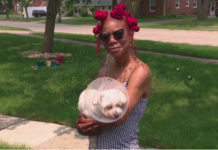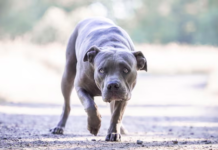Last Updated on September 3, 2023 by Fumipets
Havanese: The Charismatic Cuban Companion
Havanese invites you to discover the delightful world of this charming Cuban breed. With a lively and affectionate nature, the Havanese dog has earned a reputation as a devoted family pet.
This summary explores the breed’s origin, distinctive characteristics, care requirements, and what makes Havanese dogs beloved companions in households around the world.
Havanese
Due to his silky, streaming hair, the Havana Silk Dog (also known as the Blanquito de la Habana, or “little white dog of Havana”) was once the name of Cuba’s national canine. The Havanese, now known simply as that, is a clever, loving, and playful companion type. The Havanese is a movable lapdog that blends in well with the lives of people who live in towns and flats because he doesn’t need much room or exercise.
A sweet little small-breed canine is the Havanese. The Havachon (Havanese plus Bichon frise), Hava-Apso (Havanese plus Lhasa apso), Havapoo (Poodle plus Havanese), and numerous other variants of the Havanese breed are common.
Appearance
Havanese canines and pups tend to appear larger than they actually are due to their lengthy, thick fur. The type weights 7–13 pounds and measures only 8.5–11 inches tall at the hip beneath that opulent hair. His tail is positioned high and arcs over his back, and his torso is slightly longer than it is tall. The silky, curly garment, which is available in a variety of hues, is occasionally “corded,” or made into dreadlocks.
Large, dark-brown eyes of a Havanese seem to gleam with a touch of playfulness, alerting onlookers to his mischievous, perceptive character. The Havanese’s gait is characterized by its bounce; this movement in the stride first appears in pups and does not fade with age.
When a Havanese puppy reaches the age of one year, their fur frequently deepen, soften, or completely change tone. As a result, it’s not always feasible to anticipate what a mature dog will appear like.
Temperament
Regarding the Havanese, charming is an understatement. This canine is a natural entertainer who enjoys socializing. He is intelligent, gentle, anxious to please, and simple to teach.
He makes a great asset to any household and gets along well with young ones, small animals, and family cats. Due to his affectionate personality, this canine is well-liked as a therapy dog and mental support animal.
A Havanese, despite his small stature, barks confidently and frequently warns his family of anything he considers dangerous, including the mailman. Early socialization and loads of positive reward training will help a Havanese baby feel secure around unfamiliar people, animals, and environments.

Living Needs
Anywhere from a small condominium to a large house, Havanese canines will be content. The majority of the time, these friendly creatures just want to be by their side and prefer being in a bed to pretty much anywhere else. They don’t really care where they reside.
A Havanese puppy may grow restless if left alone for an extended amount of time and start whining excessively. (Although, Neabore says this breed does tend to bark less than many other small dog breeds). Senior citizens, couples, and anyone else seeking a consistent friend should strongly consider this type.
The Havanese is lively but not particularly busy; he usually receives his daily exercise by simply bounding around the home. There may be other choices available for dog owners looking for canine companionship while trekking, walking, camping, and other outdoor activities. However, these puppies will enjoy a daily 30-minute stroll or some playing in a fenced-in area to extend their legs.
Care
The Havanese needs daily cleaning because of their streaming coat—it won’t smooth itself! He needs to have his hair cleaned a few times a week to prevent clumps and knots. Some Havanese owners choose to get the hair braided or clipped to save time and effort. Despite the fact that his hair requires a lot of upkeep, Havanese don’t lose much, so you won’t have to worry about fluttering fur.
Along with looking after his lengthy hair, owners of Havanese dogs also need to routinely clip his claws, occasionally bathe him, inspect and clean his ears, and clear his eyes to avoid weeping stains.
Havanese canines take to instruction well. Positive feedback (with rewards, head pats, and an effusive “good boy!”) works well with this delicate breed because it gives them a reason to spend time with and satisfy their owners. But it is best to limit the amount of sweets you consume. A little luxury goes a long way with tiny canines, and as a result, a Havanese can readily gain weight. People frequently give them gifts, failing to understand that giving a 12-pound canine a potato chip is equivalent to giving yourself a full container of chips. Compared to a large-breed canine, they have a tendency to gain weight more quickly.
Because Havanese dogs are inherently more delicate than larger varieties, harm could easily result if they are trodden on or thrown. Therefore, proprietors must exercise extra caution when managing them and even when moving about the home. If a Havanese resides with young children, watch over their playing at all times and educate the kids on how to behave around animals.
Health
The Havanese longevity is a protracted 14–16 years, so when you acquire this vivacious puppy, you can anticipate him to live a long life. According to the Havanese Club of America, this breed is known to be generally healthy but is susceptible to a few illnesses, such as blindness, eye abnormalities, heart disease, and bone and joint problems, such as hip deformity. (HCA). Owners of Havanese should discuss possible problems and risk reduction strategies with their doctor.
Your producer ought to perform all of the health examinations advised by the OFA before you take home a Havanese baby.
Additionally, due to their tiny size, Havanese are prone to tooth problems, so frequent dental cleanings at the veterinarian’s office or at home can be beneficial. Even those huge types of dogs have more canines than these small-breed dogs, but they are all crammed into a minuscule little jaw. They develop oral disease very readily because they have a lot of buildup and calculus between their teeth. The public needs to give very careful attention to that.

History
The Havanese canine, so named after Cuba’s capital city of Havana, used to frequently be found on the shoulders of nobles and affluent locals.
According to the HCA, Spanish sailors are believed to have introduced this cute species to Cuba. The Havanese’s ancestors come from the Bichon family (he’s probably a relative of the white Bichon frise), and through decades of top Cuban care, the breed has evolved further.
In the late 1950s, many Havanese fled the Cuban Revolution and came to the United States. In reality, all current Havanese canines (aside from those that are still in Cuba) can be traced back to 11 puppies that immigrated with their masters, according to the HCA. The American Kennel Club formally approved the species in 1996.
Questions & Answers:
What is the origin of the Havanese breed, and why are they often called “Velcro dogs”?
Havanese dogs hail from Cuba and have a history dating back to the 18th century. They are called “Velcro dogs” due to their tendency to form strong bonds with their owners and stick by their side.
What are some standout characteristics of Havanese dogs in terms of size, coat, and personality?
Havanese are small, sturdy dogs with a silky, long coat that comes in various colors. They are known for their friendly and outgoing personalities, making them excellent companions.
Are Havanese dogs suitable for families with children and other pets?
Yes, Havanese dogs are known for their gentle and sociable nature, making them great additions to families with children and other pets. They are generally good with everyone, provided they receive proper socialization.
What grooming needs do Havanese dogs have, given their long coats?
Havanese require regular grooming to keep their coats free from mats and tangles. Brushing a few times a week, along with professional grooming every few months, helps maintain their coat’s health and appearance.
Do Havanese dogs have any common health concerns, and what can owners do to ensure their well-being?
While generally healthy, Havanese dogs can be prone to certain health issues, such as hip dysplasia and cataracts. Regular veterinary check-ups, a balanced diet, exercise, and dental care contribute to their overall well-being.


















